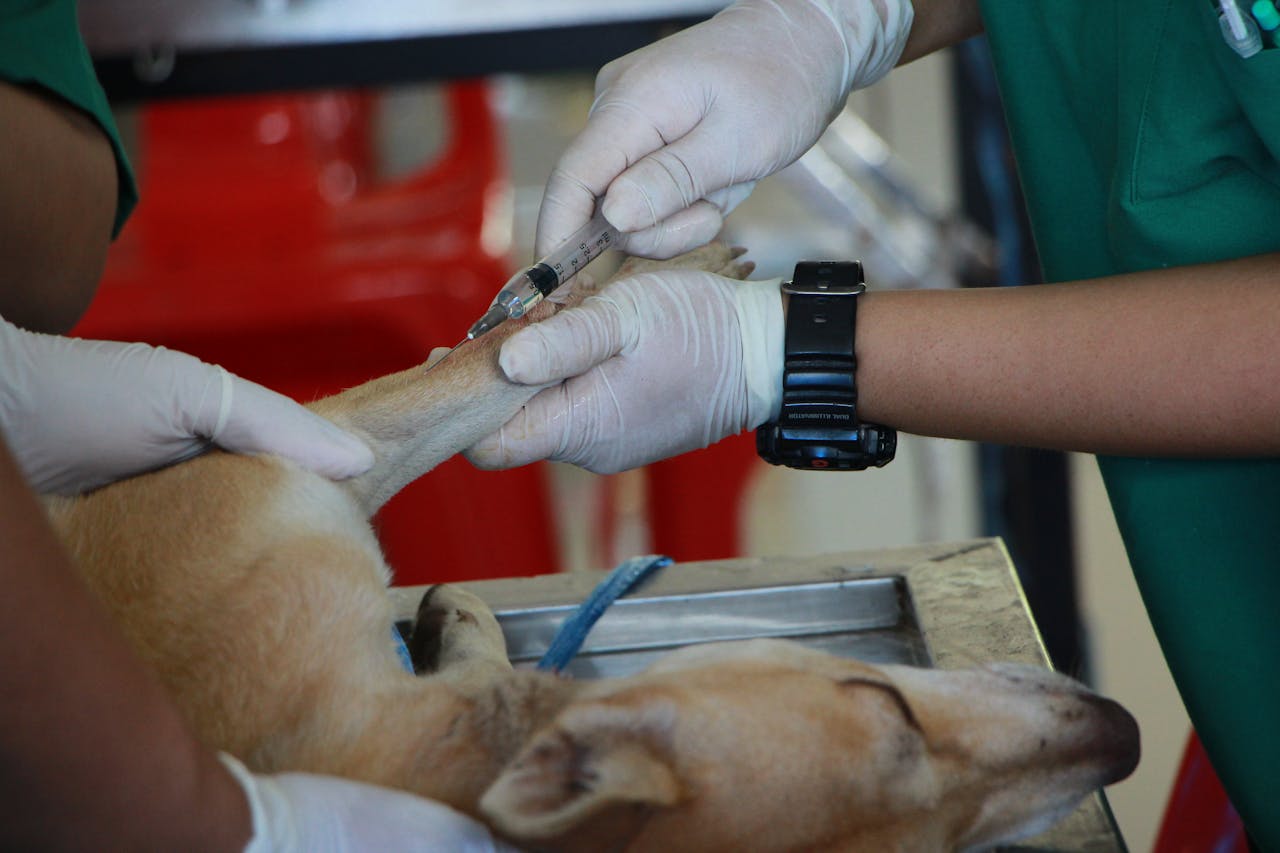Understanding Cancer in Pets: A Veterinarian’s Insight

What Is Cancer?
Cancer occurs when the body’s cells grow and divide uncontrollably. These abnormal cells can form:
-
Benign tumors: Non-cancerous growths that remain in one area and don’t spread.
-
Malignant tumors: are cancerous growths that invade surrounding tissues and can spread (metastasize) to other body parts via the bloodstream or lymphatic system.
To determine how advanced a cancer is, veterinarians use a staging system:
-
Stage I: Localized tumor.
-
Stage II: Tumor involving nearby lymph nodes.
-
Stage III: Cancer that has spread throughout the body.
The stage and specific cell characteristics help guide treatment options and predict outcomes. However, they don’t always guarantee a clear prognosis.
Which Pets Are at Risk?
Cancer can affect pets of any age or breed, but some are more vulnerable:
-
Older animals are more prone to cancer, although young pets aren’t immune.
-
Large breeds like Great Danes and Rottweilers are more susceptible to bone cancer.
-
Boxers have a higher risk of mast cell tumors.
-
Environmental factors also play a role. For example, spaying dogs or cats before their first heat reduces the risk of mammary cancer, and white cats with prolonged sun exposure are at risk for skin cancer.
Signs to Watch For
Early detection can make all the difference. Look for these warning signs:
-
New lumps or growths.
-
Sudden weight loss.
-
Loss of appetite or energy.
-
Changes in behavior or overall well-being.
Regular vet check-ups—annually or even semi-annually for older pets—are key to catching issues early. Your vet may recommend additional diagnostic tests, such as bloodwork, X-rays, or biopsies, to confirm if a tumor is cancerous.
Treatment Options
Veterinary oncology has come a long way, offering multiple ways to treat cancer, including:
-
Surgery: Ideal for removing localized tumors. In some cases, surgery is combined with other treatments for better results.
-
Chemotherapy: These drugs target rapidly dividing cancer cells. Unlike humans, pets often tolerate chemotherapy well, experiencing fewer side effects. Treatment may involve oral medications at home or injections administered at specialized facilities.
-
Radiation Therapy: Useful for localized cancers, such as oral or skin tumors. Advanced technology has reduced risks, but availability may be limited.
-
Other Therapies: Options like cryosurgery (freezing tumors), hyperthermia (heat therapy), and immunotherapy (boosting the immune system to fight cancer) are showing promise.
Caring for a Pet with Cancer
Some cancers can be cured or managed, allowing pets to live long, happy lives. However, not all cases have favorable outcomes. Deciding whether to pursue treatment is a deeply personal choice, guided by your pet’s condition and quality of life.
In cases where cancer is untreatable, veterinarians focus on palliative care—ensuring pets are comfortable and free from pain during their remaining time. Advances in medicine continue to offer hope, with new treatments emerging that may improve outcomes for pets battling cancer.
Your veterinarian is your best resource for understanding your pet’s specific risks and needs. With early detection and the right care, there’s always hope to give your furry family member the best life possible.
Get insurance plans with wide-ranging coverage options













